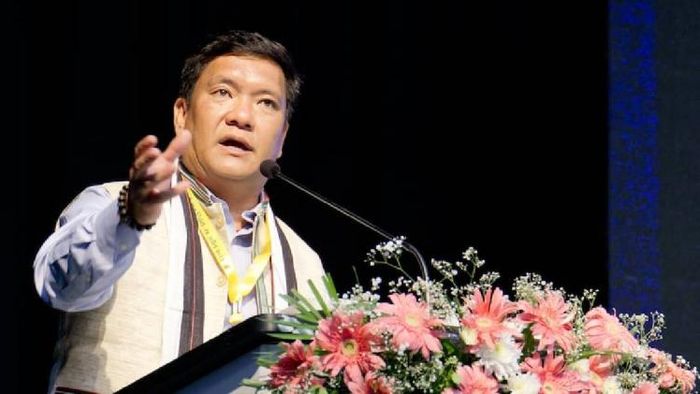Arunachal Chief Minister Pema Khandu advocates nine parameters for sustainable village development
Chief Minister Khandu also highlighted the increased allocation of funds for panchayati raj in the state budget for the year 2023-24, with Rs 143 crores earmarked for this purpose, compared to Rs 123 crores allocated in the previous year.

- Apr 24, 2023,
- Updated Apr 24, 2023, 7:25 PM IST
Arunachal Pradesh Chief Minister Pema Khandu has outlined nine parameters for achieving localized sustainable development goals (LSDGs) based on the United Nations' sustainable development goals (SDGs) for the development of villages in Arunachal Pradesh. Speaking at the inaugural ceremony of a 3-day training program of trainers commemorating National Panchayati Raj Day, Chief Minister Khandu emphasized the importance of these parameters as a roadmap for panchayati raj institutes to plan and implement developmental projects in their respective segments.
The nine parameters prescribed by the state's department of panchayati raj are a clean and green village, water-sufficient village, child-friendly village, healthy village, poverty-free village, self-sufficient infrastructure village, socially secured and socially just village, village with good governance, and gender equality village. Chief Minister Khandu stated that these parameters, in accordance with the 17 SDGs adopted by the United Nations, of which 15 are relevant for Arunachal Pradesh, are integral to the state government's annual budgets to achieve sustainable development goals. He further urged the panchayati raj institutes to plan and work towards achieving these parameters for the wholesome development of villages.
Chief Minister Khandu also highlighted the increased allocation of funds for panchayati raj in the state budget for the year 2023-24, with Rs 143 crores earmarked for this purpose, compared to Rs 123 crores allocated in the previous year. He reiterated the state government's commitment to devolve powers to panchayati raj institutions, a decision that was formally taken by the state cabinet under his leadership in September 2021, based on the SPICE (sustainable, participatory, inclusive, comprehensive, and empowerment) formula devised by the panchayat department. He further stated that 10% of the state's own resources, in addition to finance commission grants, are being accorded to PRIs (panchayati raj institutions).
Chief Minister Khandu acknowledged that while significant infrastructure has been developed in towns and cities, particularly in the capital Itanagar, the sustainable development of villages is crucial for the overall development of Arunachal Pradesh. He emphasized that the responsibility for the development of villages lies with the panchayati raj institutions and urged for convergence of similar schemes and programs involving different departments into one and executing them at the grassroots level. He also cited the recent visit of Home Minister Amit Shah to Kaho, the 'first' village on the Indian side of the Line of Actual Control (LAC) in Anjaw district, where the Centre's ambitious Vibrant Village Program (VVP) was launched, as an example of the government's commitment to developing all villages along the border and other areas of the state.
The three-day training program, attended by 225 trainers including officers and PRI members from across the state, covers 27 subjects divided into eight sessions. Experts have been invited as resource persons for the training program. Chief Minister Khandu also launched a booklet on LSDGs and visited the LSDG-model village set up at the venue, which illustrates the nine parameters for wholesome village development in convergence mode. He also interacted with Self Help Groups (SHGs) and discussed ways of boosting cooperation for further development of tribal art, with various products made by SHGs on display at an exhibition sponsored by the Ministry of Tribal Affairs, Government of India.